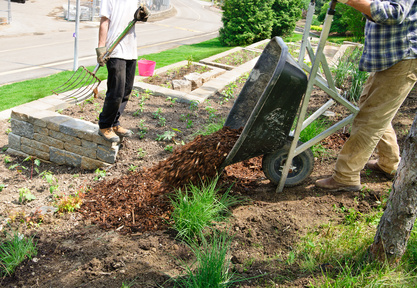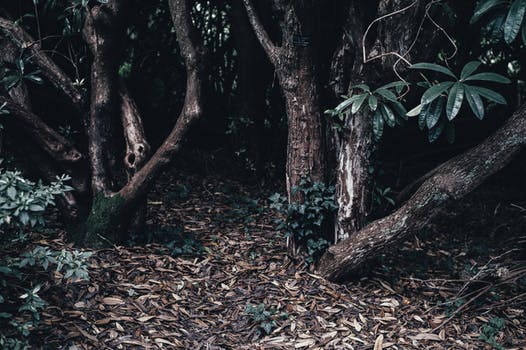 One of the many practises involved in organic gardening is the use of mulches to cover the soil surface and most gardeners are probably familiar with this process.
One of the many practises involved in organic gardening is the use of mulches to cover the soil surface and most gardeners are probably familiar with this process.
Mulching replicates nature’s process of adding organic material to the soil by forming a layer of fallen leaves and twigs on the soil surface, which in then broken down to add humus and nutrients to the soil.
Mother Nature does not like bare ground and if you think about it, where do you see bare ground out in the natural environment without something covering it. Up in the mountains, you won’t see much bare ground as it is mostly covered with plants or stones/gravel. In forests, there is a good layer of leaf litter on the ground.
There are many benefits of applying mulch to your garden, some obvious and some not so obvious.
- Water conservation: Mulching your garden will mean that water loss from the soil is reduced and you won’t have to water so often. Just think back to last summer when watering did become an issue.
- Suppress weeds: With mulching, you will get less weeds growing so hopefully you won’t spend so much time weeding and your garden will look a lot better.
- Improving the soil: Organic mulches will break down and become incorporated into the topsoil. Mulches generally don’t supply many nutrients to the soil so you still need to add fertilisers.
- Protects the roots from temperature extremes: Roses like a cool root run so mulching will provide protection during the hotter months. This in turn promotes good growth and roses are less susceptible to fungal diseases
- Prevents cracking and crusting of the soil: During the dryer months, the soil can crack and form a crust, which makes it difficult for water to penetrate the soil. Mulching will help prevent this as well as erosion of your soil by wind or water.
- Improve the appearance of your garden: As well as reducing the amount of weeds, some types of mulches will also enhance the appearance of your garden.
 One of the great things about mulching is the wide range of materials that can be used in the garden. The only limitations on what we use is the cost and our own preferences when it comes to the various options available.
One of the great things about mulching is the wide range of materials that can be used in the garden. The only limitations on what we use is the cost and our own preferences when it comes to the various options available.
Materials used for mulching can be divided into two groups organic and inorganic. Organic mulches are those that are derived from plant material one-way or another and includes Compost, bark nuggets, shredded bark, composted bark fines, lawn clippings, newspaper, pea straw, animal manure, sawdust, peat and autumn leaves.
Inorganic mulches are made of synthetic materials or do not break down readily. Examples include weed matting, gravel or stones, scoria and old carpet.
As well as these materials, we could also consider low growing or ground cover plants as a ’living mulch’. There is a wide range of plants that could be used so consult your gardening books, have a look around other gardens and ask other gardeners for their recommendations. Be aware though that some plants can take over hence the need to research first.
Before laying your mulch, particularly the organic types, give your garden a good weeding, taking particular care to remove any perennial weeds such as docks, thistles or couch. They will regrow through organic type mulches.
If you are using organic mulches without using newspaper or plastic weed matting underneath, you will need to apply at least 5cm (2 inches) to prevent most weed seeds from germinating. If you are using newspaper or plastic, then you should be able to get away with less. Don’t lay your mulch so it touches the base of plants, as it will cause your stems to rot. Leave a gap between the stem and the mulch.
Organic mulches that are not well rotted such as sawdust or bark take nitrogen out of the soil as they break down so it is a good idea to add some extra fertiliser such as blood and bone when mulching. Don’t use treated sawdust and if using lawn clippings, make sure these have not come from lawns that have been sprayed. Apply lawn clippings thinly as they can generate a fair bit of heat.
By Hayden Foulds
Hayden also serves as Deputy Chairman of the World Federation of Rose Societies Rose Trials Committee amongst other rose endeavours.










Join the Discussion
Type out your comment here:
You must be logged in to post a comment.